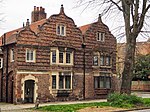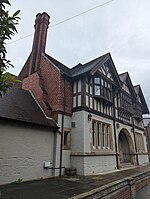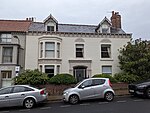Queen Anne Grammar School
1920 establishments in England1985 disestablishments in EnglandDefunct grammar schools in EnglandDefunct schools in YorkEducational institutions disestablished in 1985 ... and 3 more
Educational institutions established in 1920Use British English from November 2017Yorkshire school stubs
Queen Anne Grammar School for Girls was a single-gender female state grammar school in the city of York, England. It began in 1906 as the Municipal Secondary School for Girls and was based in Brook Street. At the end of 1909 the pupils were transferred to a new 5+1⁄2-acre site in Clifton. The school's name was changed in 1920 and Queen Anne was chosen as it was situated on Queen Anne's Road. The school emblem was a sphinx underneath which was a furled ribbon reading the school motto Quod Potui Perfeci.The school became a co-educational comprehensive in 1985. It closed in June 2000 and in 2001 St Olave's School moved to the site.
Excerpt from the Wikipedia article Queen Anne Grammar School (License: CC BY-SA 3.0, Authors).Queen Anne Grammar School
Queen Anne's Road, York Clifton
Geographical coordinates (GPS) Address Nearby Places Show on map
Geographical coordinates (GPS)
| Latitude | Longitude |
|---|---|
| N 53.964549 ° | E -1.093492 ° |
Address
St Peter's 8–13
Queen Anne's Road
YO30 7WA York, Clifton
England, United Kingdom
Open on Google Maps








